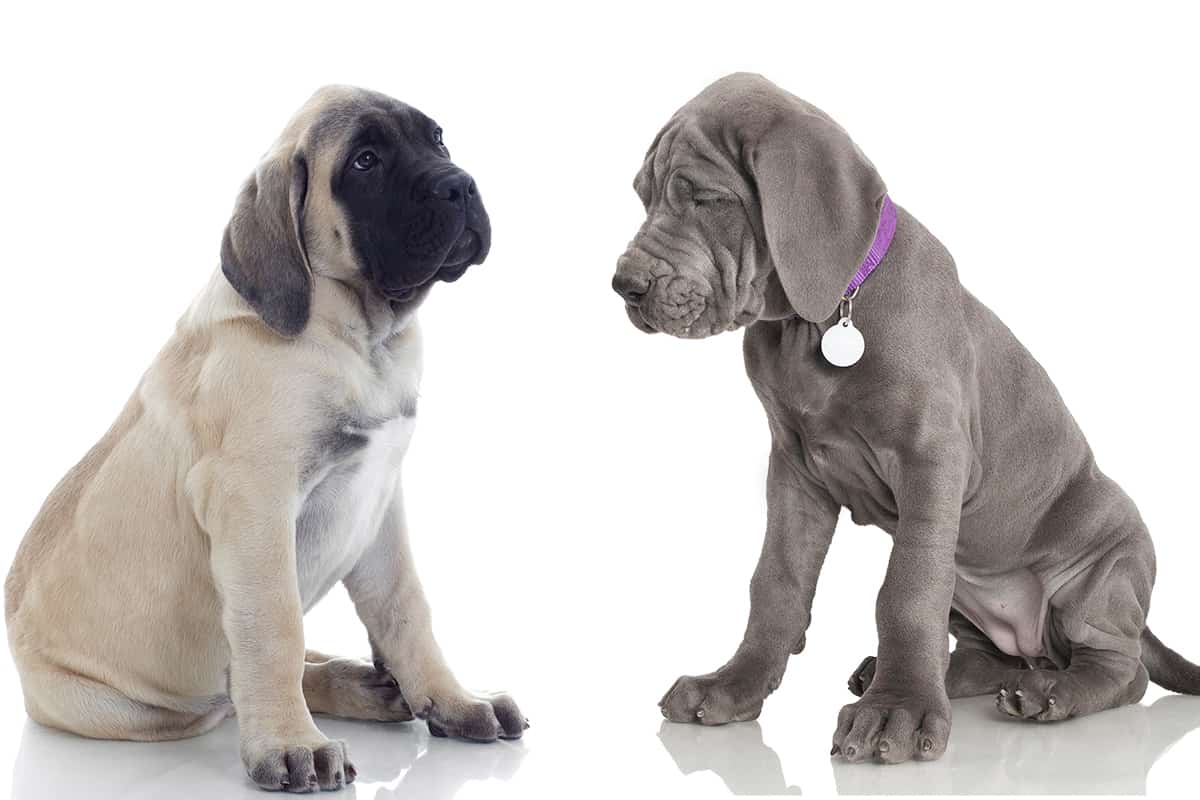
For many dog breeds, puppy food is commonly used to support the accelerated rate of growth that they experience as puppies. However, if you’ve been reading about Great Danes, you’ve likely heard many recommend not using puppy food!
Great Danes can safely eat puppy food given that it meets specific requirements around micro and macronutrient levels, calories, and contains quality ingredients. This ensures that they receive the proper nutrition to support proper growth while minimizing the risks of growth-related diseases.
Best Food for Great Dane Puppy
A list of food brands that are appropriate for Great Dane puppies is listed below.
With that in mind, it’s worth digging into more of the specifics around feeding puppy food to your Great Dane so that you can make a fully informed decision!
Table of Contents
Why Are Dogs Fed Puppy Food?
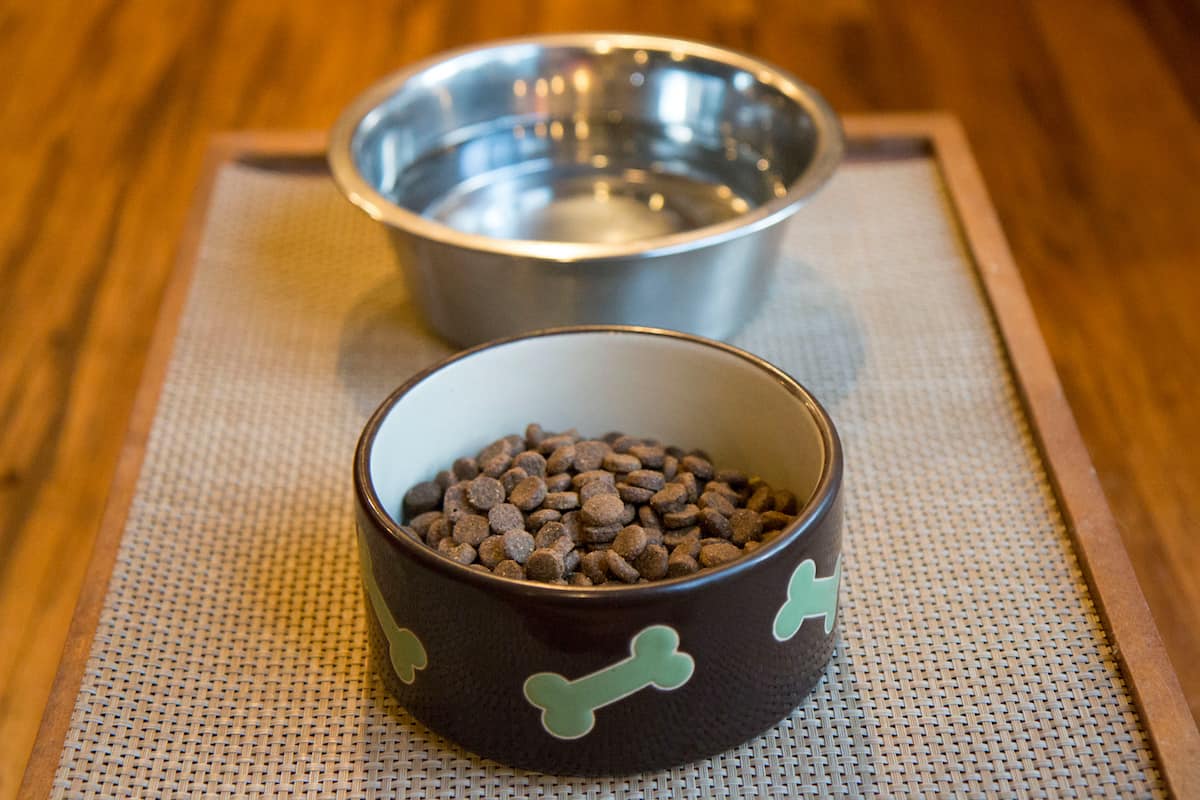
Before jumping straight in, it’s worth understanding why puppy foods were developed in the first place for dogs. And not just for large breed dogs!
Regardless of the breed, all puppies grow at an incredible rate for the first several months of their lives. Their bodies require a surplus of calories and nutrients to support this hyper growth.
This is why puppy dog foods are specifically formulated with more calorie-dense foods to support this high-growth phase.
Once a dog’s body reach or is near full size, they no longer need a caloric surplus to support ongoing growth because of their growth.
At this point, they are typically switched from their puppy-specific food to an adult formula that seeks to provide adequate calories and nutrients at a maintenance rather than growth level.
Continuing to feed them puppy food as adults could result in undesirable weight gain and other health issues.
Great Dane Food Considerations
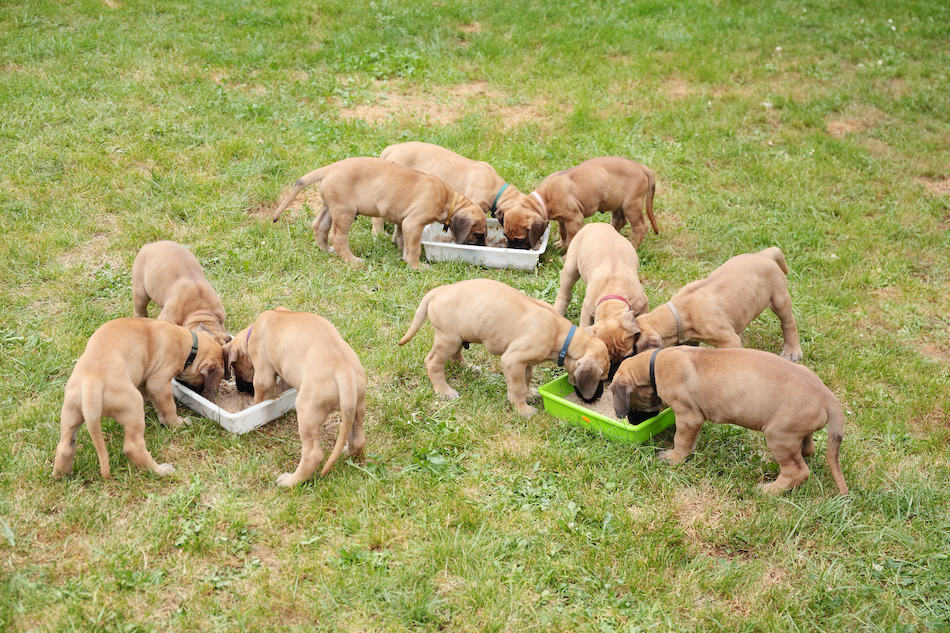
With that context in mind, it’s reasonable to think that Great Danes also need additional calories to support their large puppy growth as well.
However, there are a few differences that make a big GIANT difference.
Difference #1 – Growth Timelines
While small and medium breed dogs typically reach their full growth potential in a few months, a giant breed dog like Great Danes often takes two years to reach their full size.
Over these two years, a Great Danes body will experience massive growth and transformation that needs to be handled carefully!
Providing too many nutrients can result in unnecessary weight gain, orthopedic issues, and even result in growth-related diseases. The most common of these diseases include Panosteitis and Hypertrophic Osteodystrophy (HOD).
To help prevent these issues from arising in the puppy, it’s best to control their food to encourage slow and controlled growth in the dog over the course of their first two years.
Difference #2 – Metabolism
If you’ve ever spent much time around a Great Dane, you probably already have a good idea of their metabolism.
While they certainly have faster metabolism as puppies, giant breed dogs generally will have slower metabolisms than small breeds. This means that their bodies burn off any calories consumed through food at a slower rate.
If you were to feed a comparable food portion to them as a smaller breed, it would result in excess calories. Once again, creating the potential for weight gain and other orthopedic issues.
Difference #3 – Stomach Size & Satiety
By comparison, small and even medium-sized dog breeds simply have a harder time overeating due to their smaller stomachs.
This isn’t to say that it’s impossible, but a smaller breed dog simply can’t take in the same volume of food as giant breed dogs!
Because of these larger stomachs, Great Danes need to consume a comparatively larger volume of food to feel full.
Knowing that puppy-specific dog foods are extremely calorie dense makes for an easy recipe for overeating!
Can Great Danes Eat Puppy Dog Food?
With these differences in mind, the burning question is whether you can feed a Great Dane puppy food.
While the short answer is yes, you can feed a Great Dane puppy puppy-specific food – there are several important caveats you should consider to ensure healthy development.
Caveat #1 – Calorie Control
Firstly, controlling the amount of calories you feed your Great Dane will be incredibly important. Feeding the dog 5 cups per day of puppy food will result in far more calories than 5 cups of adult formula.
For a quick comparison, watch how the math works out!
Example #1 – Adult Food: For example number one, we’ll use a moderate-calorie food containing 375 calories per cup. When eating 5 total cups of food, that results in a total of 1,875 calories per day.
Example #2 – Puppy Food: Now, let’s say we’re working with a typical puppy formula that has 450 calories per cup. That results in 2,250 calories per day when eating 5 cups of puppy food.
While the addition of 375 calories may not sound like a lot, it’s an 18% increase in food from a caloric standpoint!
If you still don’t think that’s a significant increase, keep in mind that these additional calories compound over the course of weeks and months. Ultimately, this could result in unwanted weight gain for your Great Dane.
Of course, you could mitigate this caloric surplus by feeding them less puppy food. However, the lower food volume will result in them feeling less full and increase the likelihood of eating items as food.
This is important because the consumption of non-edible items is one of the leading causes of diarrhea in Great Dane puppies.
The takeaway here is that you should look for puppy foods containing moderate calorie density per cup.
A good range to look for is 350 – 400 calories per cup.
When deciding how much to feed your Great Dane daily, a great starting point can be found in my puppy food guide.
Caveat #2 – Micronutrients
While controlling the caloric intake for a Great Dane is extremely important, it’s not the only item that you should watch out for.
In particular, certain micronutrients play large roles in forming and developing bones and other connective tissues.
It’s important to ensure that they receive enough micronutrients to support growth, but not have a surplus that would accelerate it in an unnatural way.
The two most important micronutrients to consider are calcium and phosphate.
Ideal puppy food will have calcium between 1% – 1.5%. Anything lower than one percent is undesirable for properly supporting the puppy’s growth, while levels above that could accelerate it.
The ideal level of phosphate will be calculated as a ratio to that of calcium. For each part of phosphorus, you should find that there is 1 – 1.5 times as much calcium.
To spare you from needing to calculate these on your own, the table below shows acceptable ranges for phosphorus based on the amount of calcium present in a Danes food.
| Calcium | Phosphorus Range |
| 1% | 0.67% – 1.0% |
| 1.25% | 0.83% – 1.25% |
| 1.5% | 1% – 1.5% |
To locate these numbers on a dog food bag or food container, simply check the “Guaranteed Analysis” portion of the label on your food.
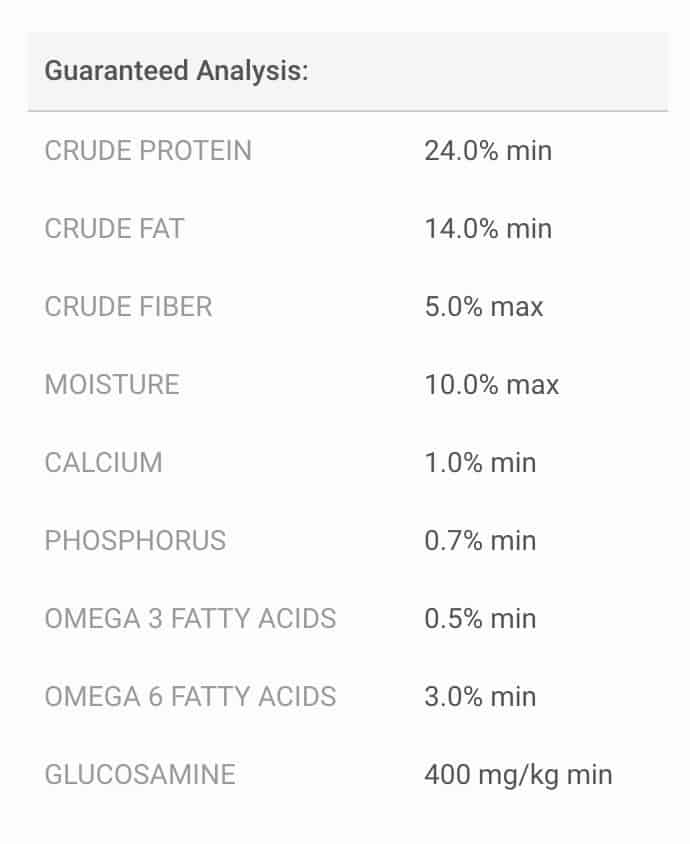
An example of this food labeling is seen above. The fifth row indicates the calcium percentage, while the sixth-row details that of the phosphorus mineral.
The calcium here is 1%, and the phosphorus is 0.7%, so this would be considered an acceptable food for Great Dane puppies to evaluate its micronutrient levels.
Caveat #3 – MacroNutrients
In addition to the micronutrients found in a Great Dane puppy food formula, the breakdown of macronutrients should also be considered.
Many dog foods for puppies add more protein and fat to increase their caloric density. However, doing so can result in unwanted outcomes for our giant breed dogs, given their long development timeline!
Similar to calcium and phosphorus minerals, there are ranges of acceptable protein and fat that can be targeted to encourage healthy development in your Great Dane.
Ideal Great Dane Protein Range: 20% – 26%
Ideal Great Dane Fat Range: 12% – 20%
In particular, you will find that many puppy options exceed the recommended target protein percentages.
CAVEAT #4 – Ingredient Quality
Last but certainly not least, the quality of ingredients used in the food formula must also be considered for the dog.
Ideally, any manufactured food that you choose for Great Dane puppies should meet the following criteria.
- Uses at least 2 different protein sources e.g. chicken and beef protein
- A meal should not be the first source of protein
- Not contain protein sources made from by-products
- Have named sources of fat e.g. duck fat or chicken fat, rather than a generic content source like “animal fat”
- Provide carbohydrates from a variety of wholesome sources such as peas, carrots, and brown rice
Similar to verifying the micronutrient levels, inspecting these items is as easy as checking the ingredient list on the dog food!
While manufacturers are not required to specify how much of the ingredient is used, they are required to list the ingredients in order of decreasing weight!
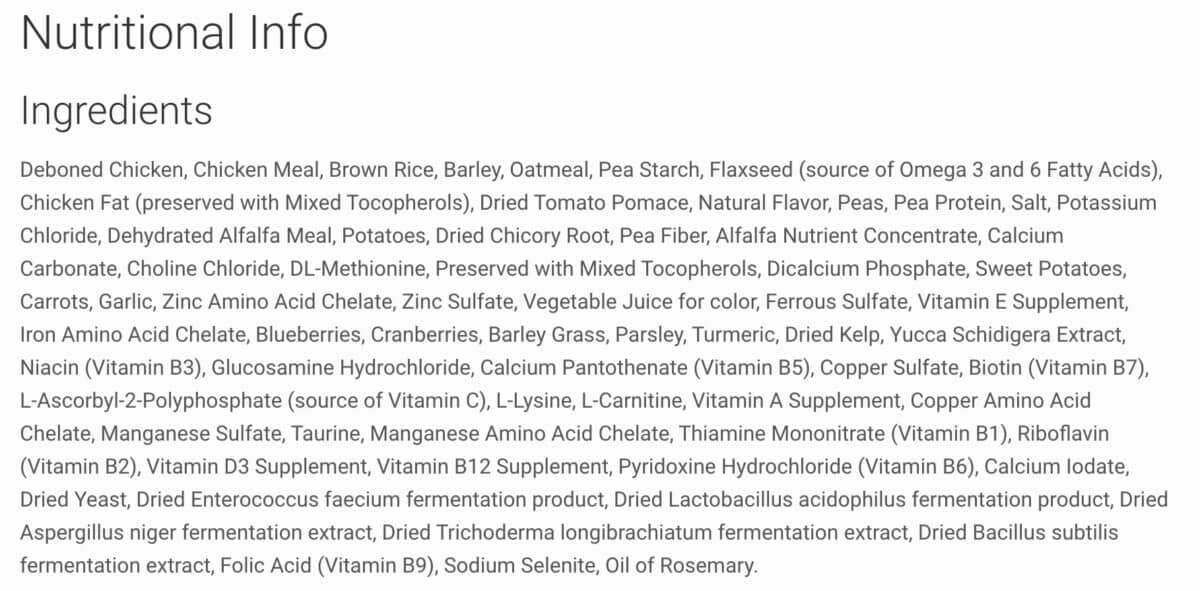
Referencing the ingredient list above as a reference, you can see how these ingredients appear on the food label.
In this case, “deboned chicken” is listed as the first food item. This means that this is the food’s most widely used ingredient by weight, while “oil of rosemary” has the least because it is listed last.
If you would like to learn more details about the specifics of evaluating a food label, I’d recommend looking at my article on the best food for Great Danes where I cover this topic in depth.
Note: For more information about caring for a Great Dane, please make sure to consider my book “The Great Dane Puppy Handbook“.
The Great Dane Puppy Handbook takes all of the need-to-know Great Dane info and packages it together into a single, concise resource. Save yourself time, money, and frustration by avoiding the most common mistakes made by Great Dane owners!
Final Take on Puppy Food for Great Danes
Given that a puppy food formula meets the guidelines covered above, there’s no reason you can’t use them for Danes.
Knowing that the needs of giant-breed dogs like Great Danes are different, many companies have developed giant-breed dog food formulas for puppies.
Many of these do a great job of moderating the calories per cup and micro/macronutrient levels. While you still need to check these dog food specifics, it’s the quality of the ingredients used where things often get dodgy!
Keep in mind while purchasing high-quality food will be more expensive up front, it will help prevent veterinary bills in the future, thereby saving money in the long run.
To save you the time of searching, I’ve compiled a short list that meets the Great Danes criteria and listed these dog foods below.
Best Foods for A Great Dane Puppy
- Blue Buffalo Life Protection Formula Large Breed Puppy Chicken & Brown Rice
- Blue Buffalo Baby Blue Healthy Growth Formula Natural Chicken & Brown Rice
- Blue Buffalo Basics Skin & Stomach Care Turkey & Potato Recipe Puppy
- Iams ProActive Health Smart Puppy Large Breed
- Eukanuba Puppy Large Breed
- Natural Balance Limited Ingredient Chicken & Brown Rice Puppy
- Nutro Ultra Large Breed Puppy
While these are just a few options you can pick from for your Dane puppy, another approach is worth considering as well…
Can Great Dane Puppies Eat Adult Dog Food?
As you may have caught on, virtually all of the criteria that we’ve accounted for in these puppy food selections are to prevent further growth acceleration. But once this is done, you’re essentially left with regular giant-breed adult food!
As long as the adult food meets the same requirements around micro and macronutrients and ingredient quality, there’s no reason you can’t feed your Great Dane puppy adult food.
By starting with adult food, there’s also the benefit of not needing to transition their food later.
Great Danes have notoriously sensitive stomachs and often experience bouts of diarrhea during these food transitions while their body adapts to the new food.
They can be fed adult food from the time that they come home, and there is no need to wait until the pup is a particular age.
My favorite food we’ve been using for years (and have no plans to change anytime soon) is
This natural dry food is specially formulated to provide whole-body nutritional support for your large breed dog. It's designed to encourage a strong immune system, optimize energy levels and ensure a healthy skin and coat while promoting whole body health.
I highly recommend using Autoship with Chewy to save yourself an extra 5%!
Regardless of your chosen food route, you do not want to switch a Great Danes food during their first year as a puppy if it can be helped.
This is the period during which Dane puppies will grow the most, and any interruptions to it should be avoided.
Supplements and Additives
Probiotics and Digestive Enzymes
Great Dane puppies can benefit from the addition of probiotics and digestive enzymes to their diet. These additives support the digestive system by maintaining a healthy balance of gut bacteria and aiding in nutrient absorption.
High-quality food with prebiotics and probiotics can help your Great Dane puppy avoid uncomfortable digestive problems.
Some of the best food for Great Danes incorporate these digestive aids to ensure your growing puppy can better process their meals and maintain overall gut health.
Omega fatty acids, particularly Omega-3, play an important role in the brain, vision, skin, and coat health of Great Dane puppies.
Be mindful of your Great Dane’s diet, as some foods are rich in these essential nutrients. An ideal dog diet can also help prevent obesity and support muscle development!
Joint Support
Due to their rapid growth and large size, Great Dane puppies are prone to joint problems such as panosteitis and ortho-gel.
Breeders recommend providing supplements like glucosamine and chondroitin to minimize the risk of these issues.
These can be found in numerous types of dog food formulated specifically for large-breed puppies.
Make sure to feed your Great Dane puppy a controlled diet to avoid overfeeding. Overfeeding can lead to rapid growth, which puts undue stress on their joints and can exacerbate any predispositions to joint problems.
It is important to measure the number of cups of food to provide based on their weight and age and follow any feeding guidelines provided by the manufacturer or vet.
In conclusion, providing a well-rounded diet that includes essential supplements, fatty acids, high-quality food, and joint support additives can be beneficial for the overall health and development of Great Dane puppies.
Remember to avoid making exaggerated or false claims and consult with a veterinarian before adding supplements or additives to their diet.
FAQs
When to switch a Great Dane from puppy food?
Great Danes should be transitioned from puppy food to adult food when they are 18 months old. This ensures that they receive the necessary nutrients to support early growth while not overfeeding them as adults.
ARE THERE ANY FOODS TO AVOID FOR A GREAT DANE PUPPY?
To ensure your Great Dane puppy receives the right nutrition, avoiding foods that may cause harm or contain inappropriate nutrients is essential.
Some dog owners may be tempted to feed their puppies human foods, but it is important to be aware of which foods are toxic or unhealthy for dogs. For example, chocolate, grapes, raisins, and excessive amounts of onions and garlic should be avoided, as they can be harmful to their health.
Always provide high-quality commercial dog food designed for large breed puppies, and if you have any doubts or questions, consult your veterinarian for expert advice.


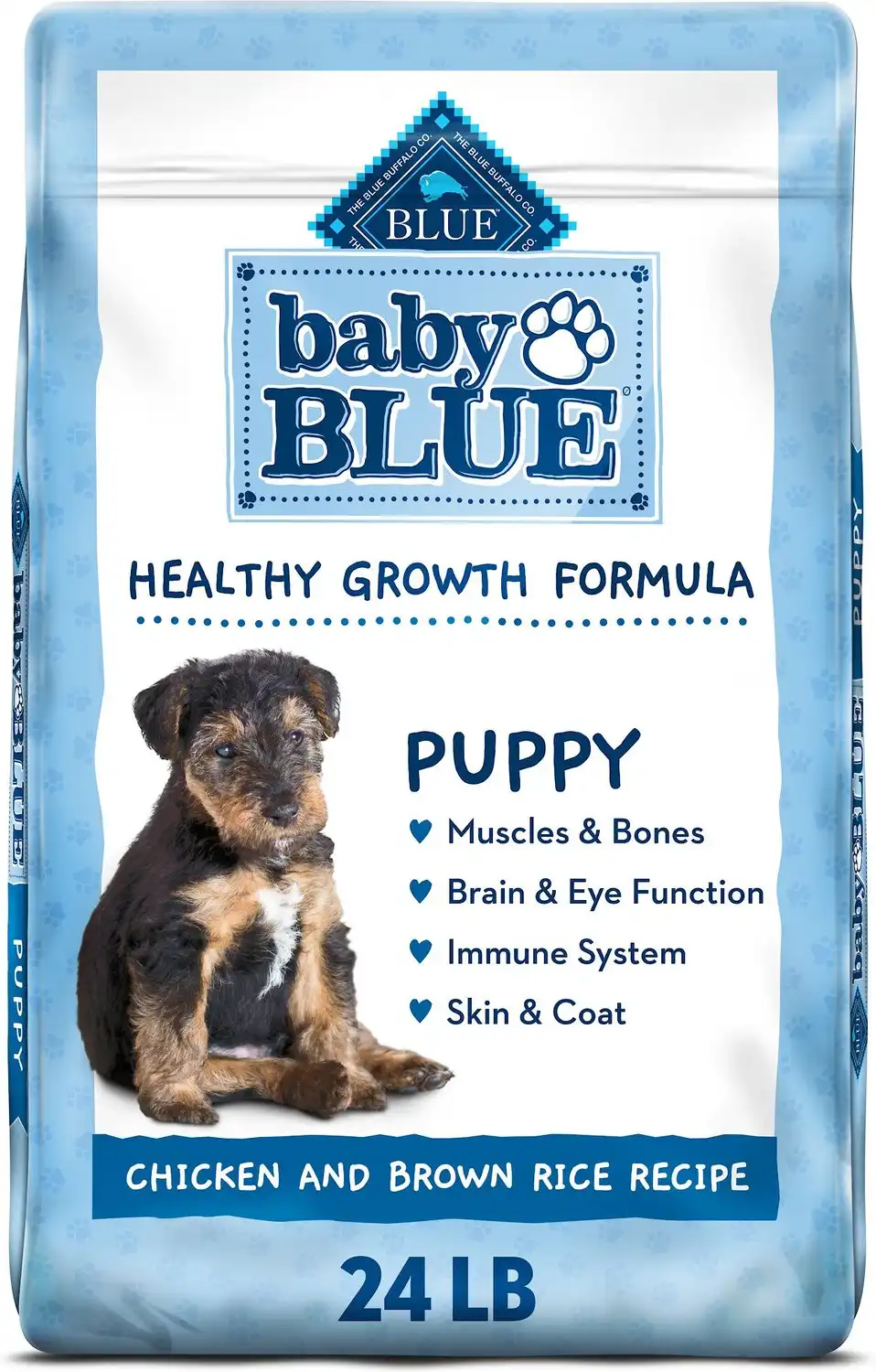
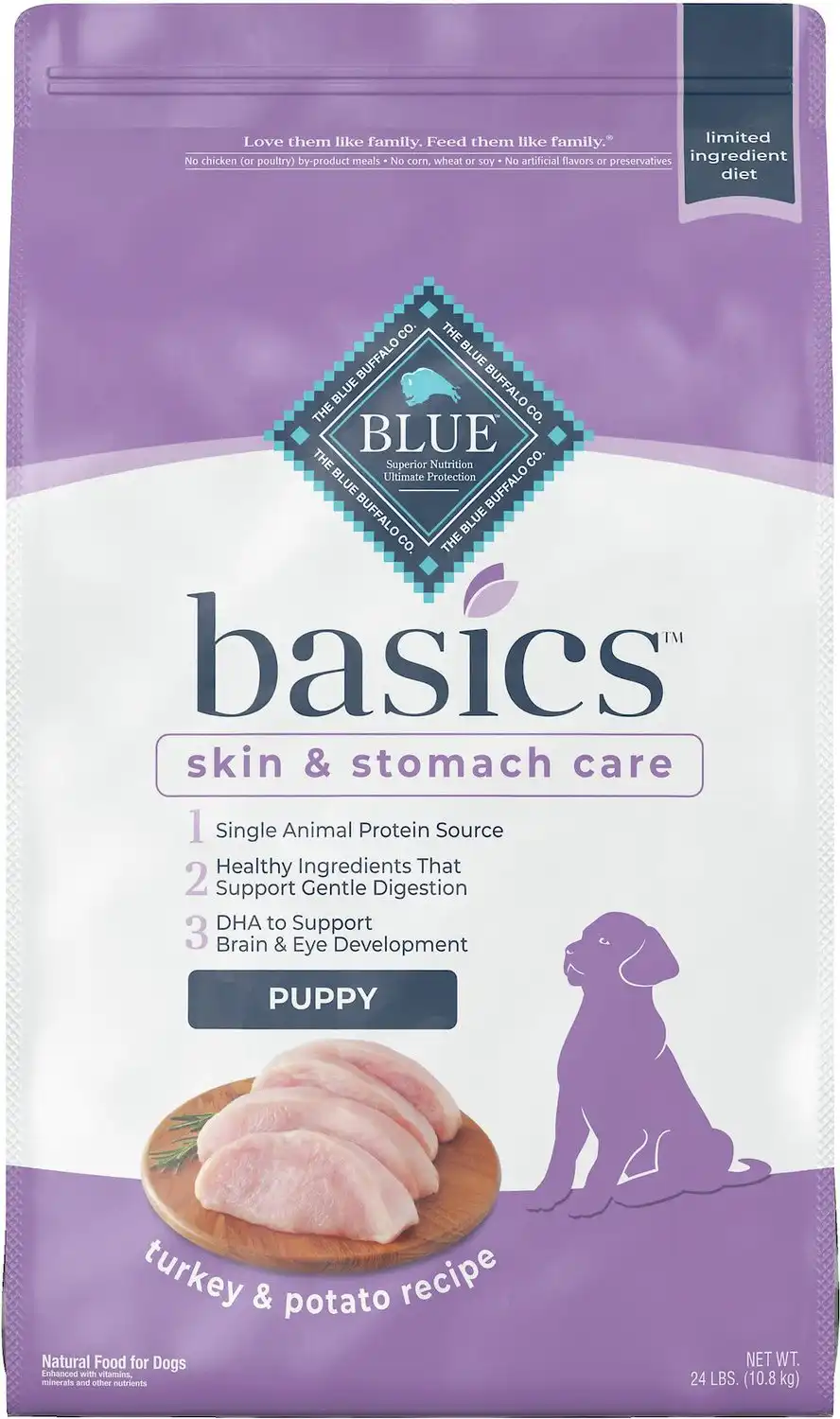
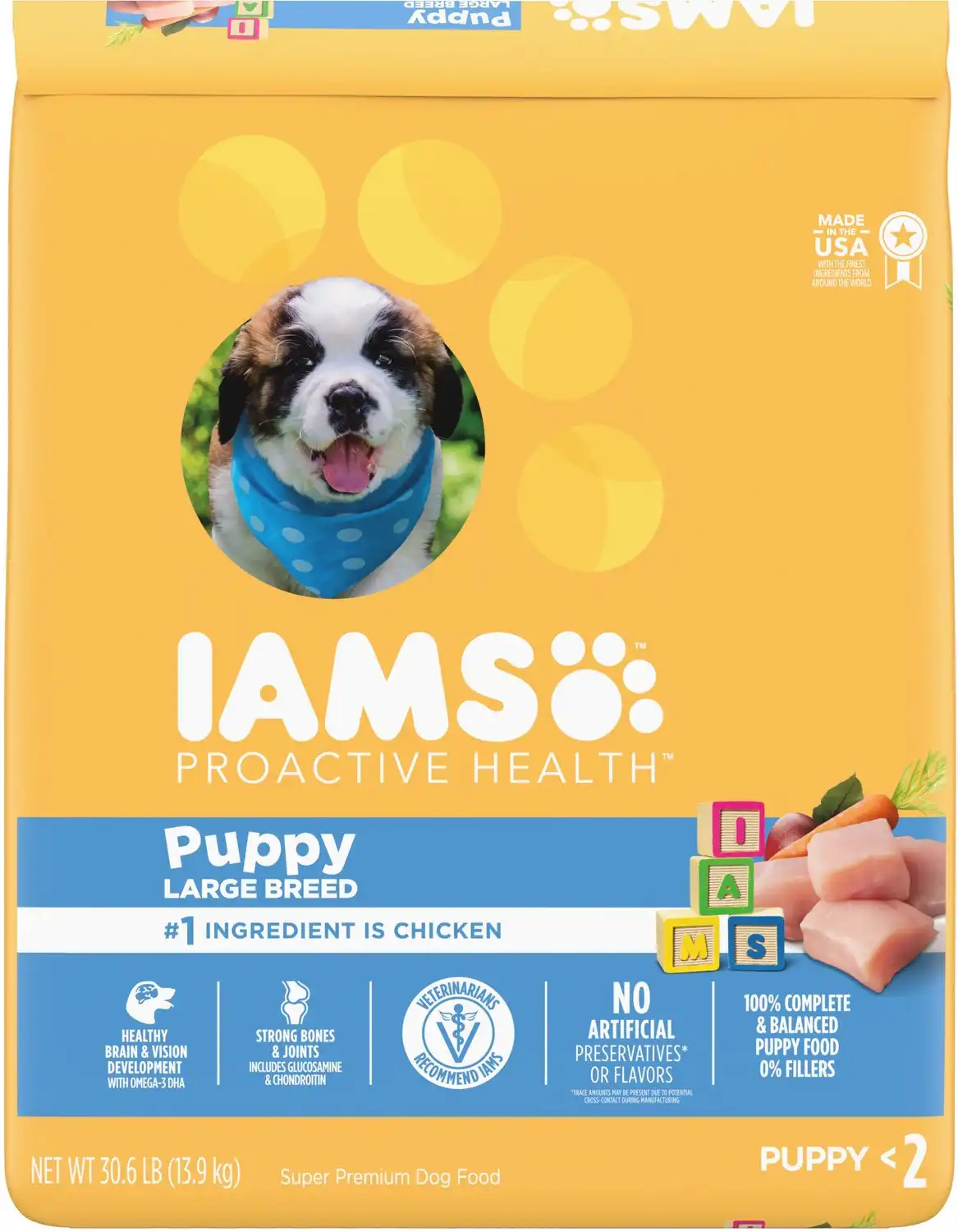
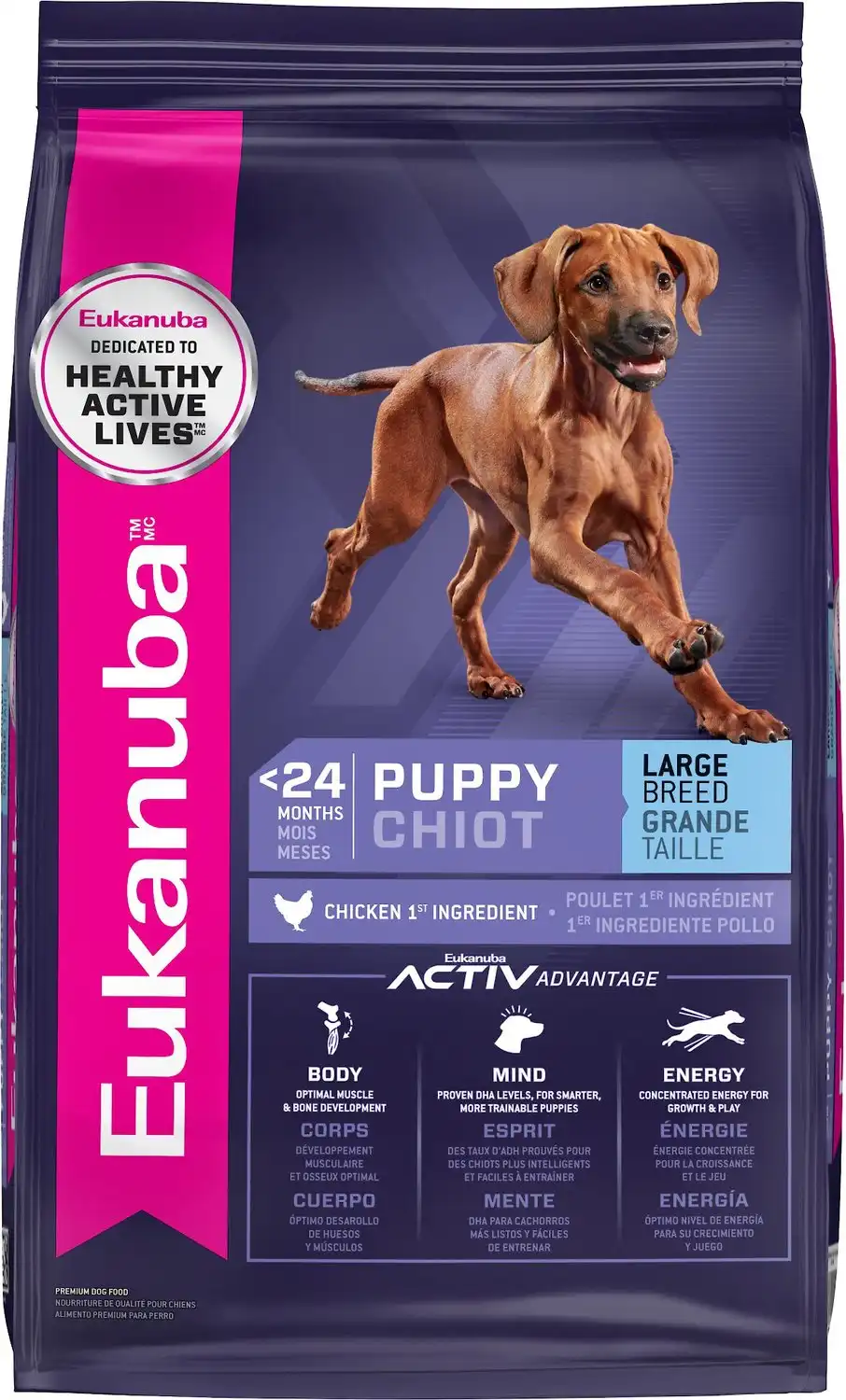

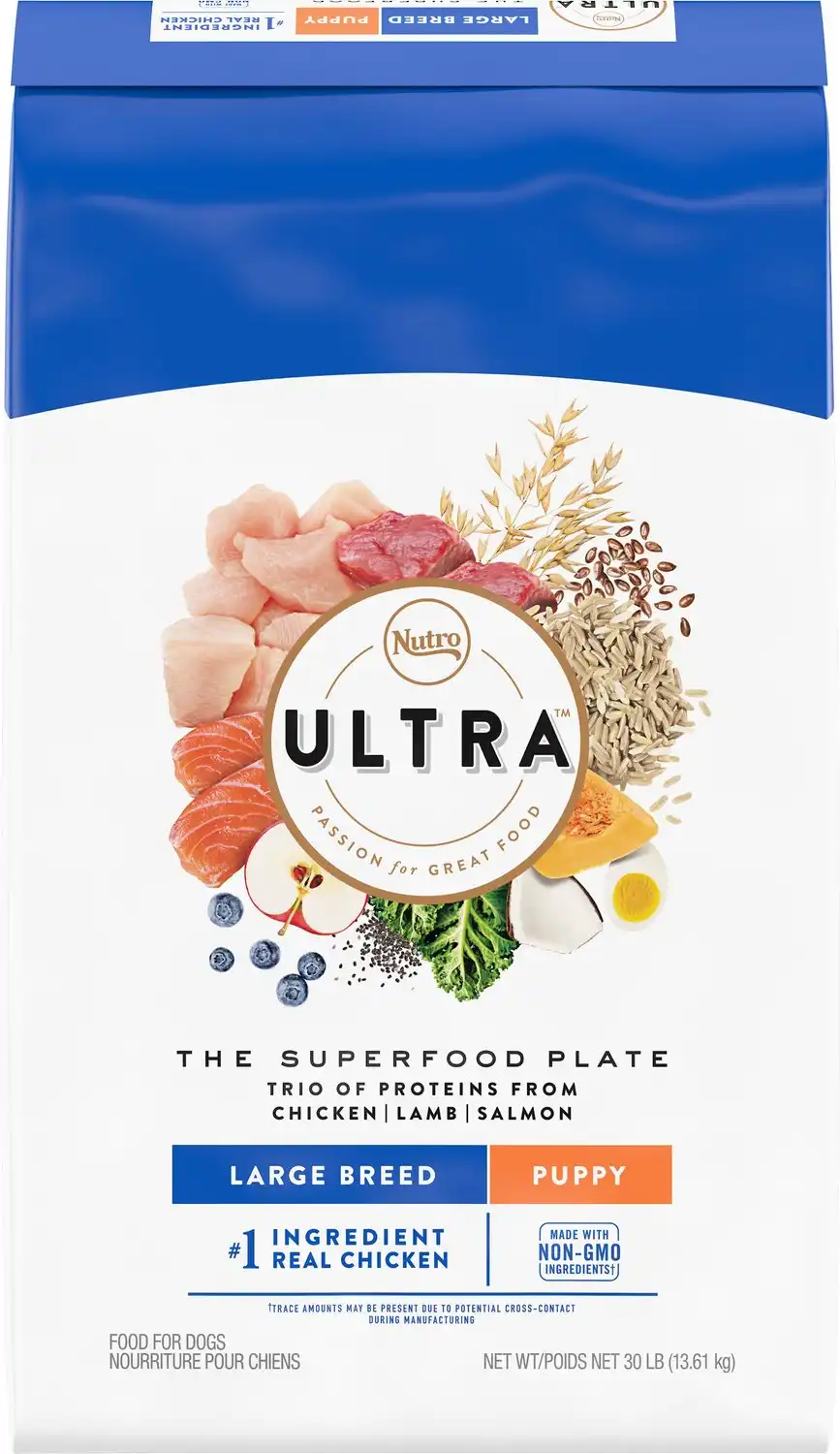
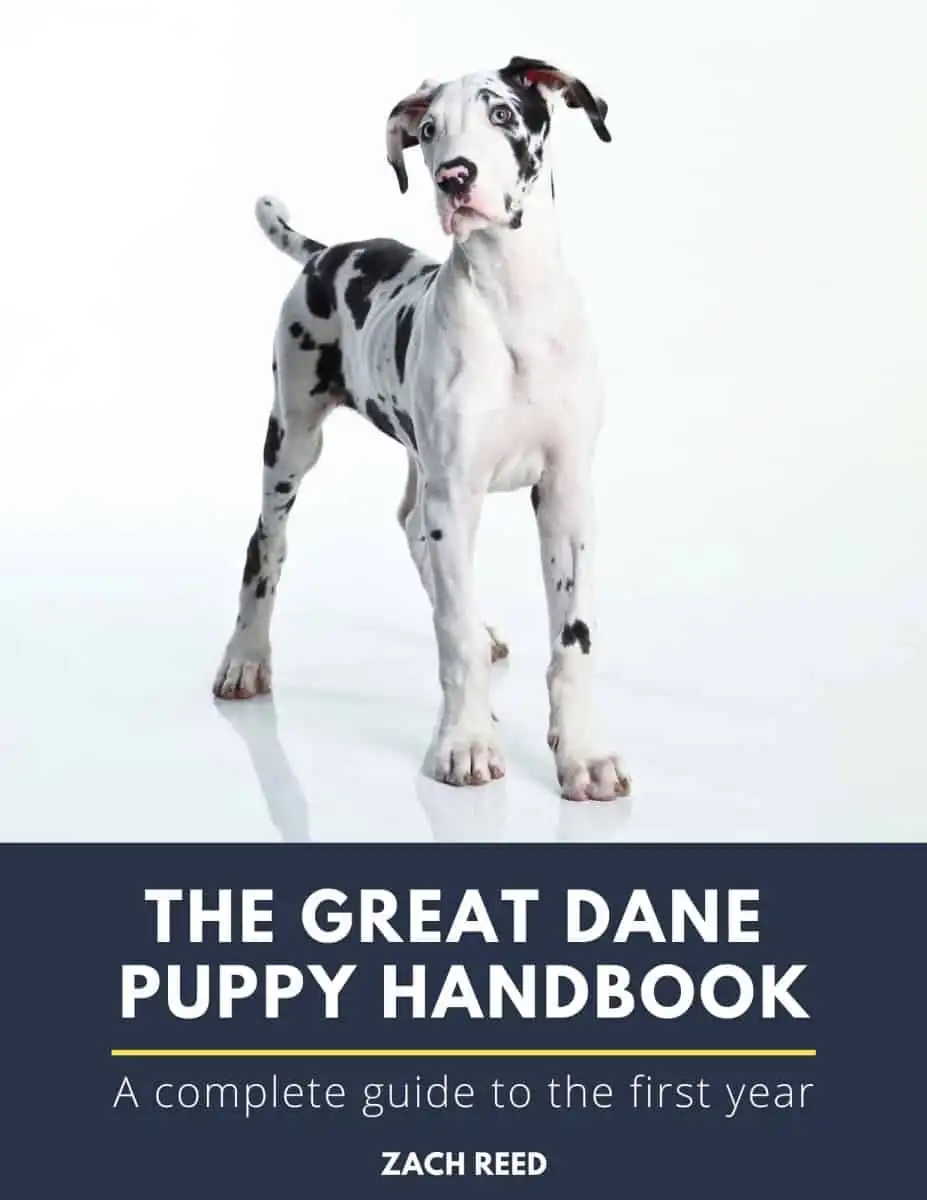
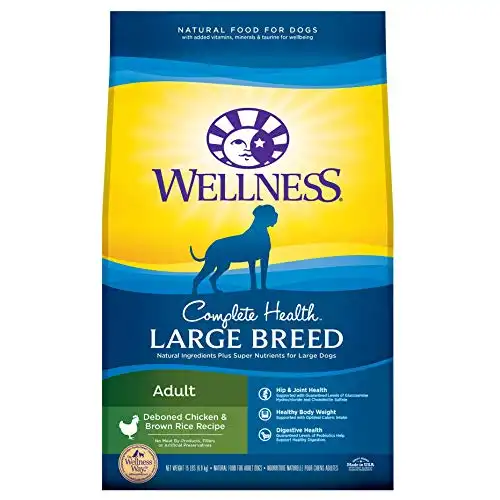
Hello,
In the feeding chart you talk about amount of food in cups.
Is the amount of cups for a meal or for the whole day ?
Thank you in advance for your advice.
Greetings.
Erik.
Do you give less of a large breed food than you would of just regular one
is adult dog food not too hard for puppies ?
I have a 15 wk old puppy who is allergic to chicken. We currently feed him Diamond Naturals Large Breed Lamb and Rice puppy food, but his poops are always so wet even if we add pumpkin. I’ve read all of your articles about feeding Great Dane puppies and it looks like all of your recommendations contain chicken. We’re at a complete loss and our vet isn’t helpful at all. Do you have any chicken-free recommendations that we can feed our pup?
Nutro brand have lamb and rice and they also have beef only adult because my girl has
chicken allergy as well!
We have a year old Dane that is allergic to chicken and yeast. We are feeding her the same food that you are feeding your dog. She used yo have the same problem that that your dog is having but it is now cleared up. You might try Solid Gold Large breed Bison and Fish formula. It is a good food but my dog did not like it.
I was having the exact problem you just explained!! I switched my entire great dane pack, over to Acana red meat formula… and WALA LIKE MAGIC… NO MORE GIANT GREAT DANE WET POOP!! WAY LESS FOOD AND THEY LOVE IT
Try a probiotic, that may help. Fortiflora is one you could try
out of curiosity did you find the correct dosage? I’ve looked and it says 1 package per meal It doesn’t specify 10 lb dog or 100 lb dog.
I had the same issue with my GSD and I tried all kinds of food under the sun. When I gave up and went to the vet I was informed that chicken is the meat type most dogs are allergic too. I was requested to start her on food allergic foods for two weeks, giving her absolutely nothing but that. If that worked I was to introduce one item at the time to find what was causing the issues. Turned out it was multiple items so it was easier for me to just stick with the allergy food.
What is the best wet food to give a great dane puppy? We are getting a blue great dane next month so wanted to know what type of wet food would be best.
What is a good grain free dog food?
As there is more date gathered from grain free diets, there is evidence that grain free diets are more likely to cause heart disease related issues rather than choosing a grain diet
My 6 month old Dane puppy has bad gastrointestinal issues. He has eaten “Eukanuba Large Breed Puppy” food since we got him, but he constantly has soft/not formed stool. Our vet recommended switching him to “Hill’s Prescription Diet – Gastrointestinal Biome Dry Dog Food” to address these issues. Have others experienced this issue?
While the Hills food meets the basic guidance outlines in this article, are there other concerns I should have with him not on a designated “Large Breed Puppy Food?”
We keep our dogs away from chemical flea treatments, chemical de-wormers and what we consider unnecessary vaccinations. Grain-free food supplemented w/broth, egg yolks, pumpkin seeds. Nematodes, regular baths, lots of vacuuming. No poop issues (except we wish there were less of it!).
If I were to use your recommendation and feed my 14 week old puppy this Wellness Large Breed Dog Food, Chicken & Rice. What do you recommend the feeding portions be? Three times a day but should I follow what you suggested above or since it is an adult food, would the portions be different?
Thank you for any help
Blue Buffalo was highly discouraged by the breeder and vet. Our now 20 month old GD has a problem keeping weight on and had been a picky eater. The vet put her on Hills Science i/d and I add Freshpet Vital cuts. So far it’s working, but she’s still not at average weight.